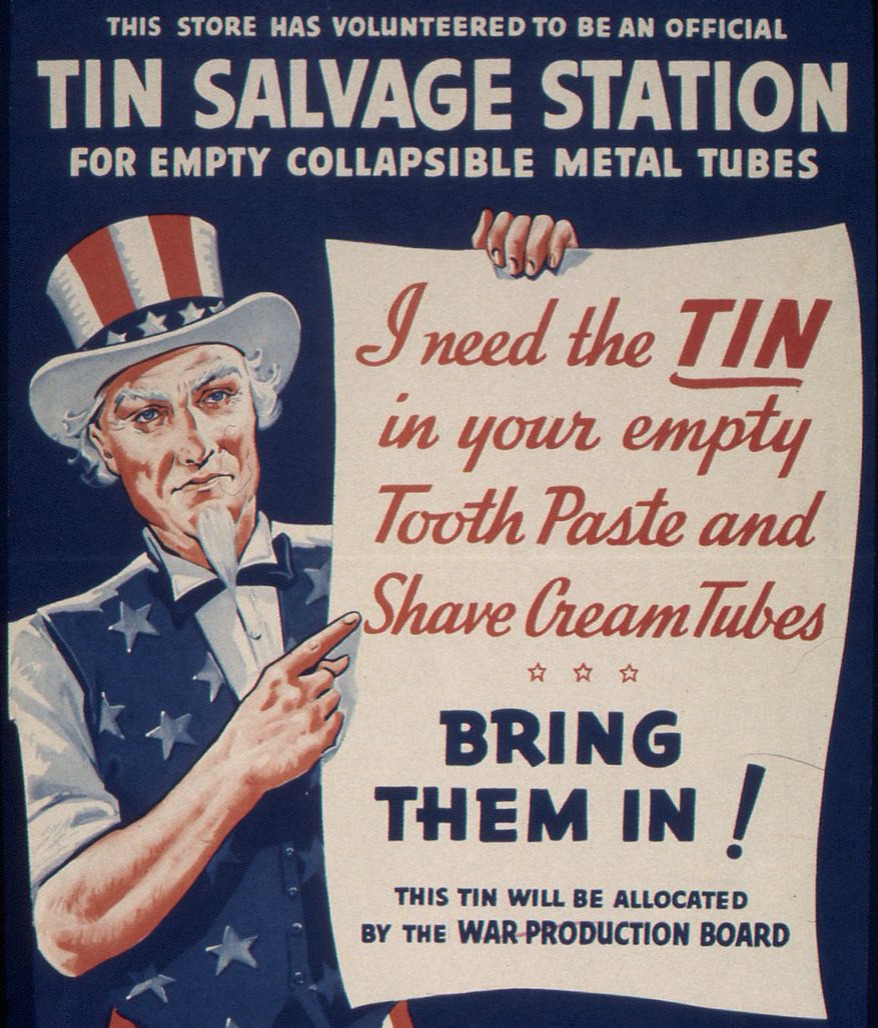By ART CHANCE
I once taught labor relations to State supervisors and managers. After the movie, “Saving Private Ryan” was released, I started my class with taking my attendees to the scene in which the Tom Hanks character reports to headquarters behind Omaha Beach to get the order to save Private Ryan.
The scene is from the bluffs above Omaha Beach and looks out to sea. The beach is crawling with men, vehicles, and materiel. The ocean has ships and aircraft from horizon to horizon.

What is important about that scene is that it’s a realistic reenactment of an actual photograph, and that the only things in the scene that existed in 1941, were a WWI battleship in the invasion bombardment fleet, and the men themselves, who were mostly in high school.
Everything else had been produced by the War Production Board and the War Labor Board between the Declaration of War and June 6, 1944.
My professional career stems from the actions of the War Labor Board, which allocated labor to industries and determined draft deferments for those skills that should be deferred from the almost universal draft in WWII for those skills and trades which were necessary to national defense.
With all respect to my “true conservative” and libertarian friends, sometimes brute, authoritarian government power is the only thing that will do.
For my Juneau friends, the A-J Mine, perhaps the richest in the world, didn’t close because it ran out of gold; it closed because the US determined that in 1944 gold was no longer a strategic material, and the War Labor Board took away the draft deferments of A-J miners.
When the War ended, the price of gold was fixed at $35/oz. and A-J was not economic to re-open. It might well be a productive mine today, but the Juneau greenies and NIMBYs would have a fit of apoplexy.
In WWI, President Woodrow Wilson essentially nationalized certain major industries for war production. We had a command economy that Soviet Russia, Hitler’s Germany, and Mussolini’s Italy would have envied.
Since we had a Constitution and still understood and believed in it, we abandoned the war measures at the end of the war. There ensued the astounding boom of “The Roaring Twenties.”
For reasons that would make this a thousand words too long, that boom collapsed in 1929. I’m not as negative about The New Deal as some of my conservative friends, but it wasn’t an unalloyed good. There is a solid argument that President Franklin Delano Roosevelt didn’t end the Great Depression, but rather Hideki Tojo and Adolf Hitler did.
The FDR scheme wasn’t full nationalization of industry; the government left the control of industry in the hands of the executives and boards of the industries and left the profits to the shareholders. Interestingly, it is much like what the Nazis did with their Gleichshalstung, or co-ordination strategy.
The War Production Board basically ordered American industries to all but cease civilian production of goods. They offered contracts to produce war materiel to government specifications and sold to the government at low-bid prices.
The War Labor Board imposed the requirement that the contracts would be under what we would call today a union “project labor agreement.” This was before the Taft-Hartley Amendments so there were no “right to work” states. Almost all war production was done under a union contract. The condition of the union contract was that the contract had a “no-strike” provision and that labor disputes would be settled by arbitration rather than strikes. The imperative was that nothing could stop production.
I never practiced before any of the War Labor Board arbitrators, but I did practice before quite a few of their understudies; they were learned and practical men, and, yes, almost all men. By the end of my career, most of the people at the head of the table were barely literate.
To get back to what this is really about: President Trump has invoked the Defense Production Act, which is a Korean War era restatement of the War Production Act and the War Labor Act. It gives the President pretty much dictatorial authority over American industry. He has invoked it, but it is clear he really doesn’t want to use it.
President Trump, as am I, is a positional bargainer; he takes a position and tells you to talk him out of it or knock him off of it. He’s saying to American industry, “Don’t make me do it.” He knows that he can commandeer their company and make them do what the government tells them to do. It wasn’t that Ford Motor Company wanted to stop making 1941 Fords at their state-of-the-art Willow Run Plant or that the company wanted to start making B-24 Liberator bombers, but they made about 20,000 of them and bombed Germany to rubble.
I’ve played this game; union reps have come to me and I to them with the message: “Don’t make me do this to you.” President Trump has taken that message to US industry, which hasn’t served us well in the last 30 years or so: “You do it, or we will; your choice.”
So far, they seem to be getting the message.
Art Chance is a retired Director of Labor Relations for the State of Alaska, formerly of Juneau and now living in Anchorage. He is the author of the book, “Red on Blue, Establishing a Republican Governance,” available at Amazon.

Great arcticle Art!
I will dissagree with you on one point… I recall that the AJ mine was the only Gold Mine allowed to keep operating because it had reserves of Galena the principal ore of Lead. Lead of course being valuable for making bullets.
I was just relying on what I remembered from Dave Stone’s history of the A-J. I know they lost their draft deferment but perhaps I only assumed it was the gold was the strategic metal involved when it was lead. Gives me something to look up.
You’re right; the A-J produced a LOT of lead.
Why has US industry not served us well in the last 30 years?
How much stuff that says “Made in USA” have you seen on store shelves lately? The only thing that has mattered to most US corporations in the last thirty years or so is the value of their stock, much of which was held by their executives. They’ve done “pump and dump” schemes on their businesses, gotten rich, and either shuttered the business or moved it to China. If you get sick from coronavirus, your meds will come from China.
Really surprised to hear that Pres. Trump has invoked those acts. Not that I disagree, as he pointed out earlier about 80% of the medical supplies including masks and medicinal drugs are produced in China. You have to wonder how that would square with our military especially if we ever got into a conflict with China. Reference US WW2 aircraft production. At one point in the war there were literally more aircraft being produced than they enemy could shoot down;; if 50 were shot down in a given 24 hrs , 75 were produced. Over 10,000 US aircraft were transferred to Russia from Nome during WW2 as part of lend lease .
The actual transfer was in Fairbanks, Ladd Field, I think. A few years back they put up a memorial featuring a bronze statue of a Soviet pilot to commemorate it. Most of the aircraft were Bell P-39s, which the US Military didn’t much like, but the Soviets loved them. Most air combat on the Soviet front was at low altitude and the P-39 had good low altitude performance and was heavily armed and rugged.
The route of the AlCan Highway actually is more or less the route for “Great Circle” navigation from the interior US to Alaska and on to Asia. The highway connected a series of airfields that allowed short range aircraft to be flown to Alaska from the interior of the US. Lend-Lease aircraft were flown on that route, many by female ferry pilots, to Fairbanks. Soviet pilots were housed in Fairbanks and were giving some familiarization training with the aircraft and then they set off via McGrath, Galena, I think, and Nome before flying on to Soviet Russia and then to the front. I’ve never seen any statistics, but due to the conditions, lack of Navaids, and dearth of training, I suspect a lot never made it.
Thanks Art. I like this historic look at what the American manufacturing companies can do when they feel the national pride. Not a lot of that pride left now, but what I hear about is gratifying,.
That statue in Fairbanks is of two pilots, one Russian and one American accompanied by a very large propeller. I was there for the dedication and was amazed at the beauty of these figures.
I also spent two years on the Alaska Labor Relations Board as the lone labor representative and was amazed at the mostly stupid cases brought to the board cases for us to rule on. I don’t think that the state labor unions represented those people well.
Most cases brought to ALRA by the unions are just a delaying tactic, particularly ULPs involving impasse. The unions know that the closer they can get to a gubernatorial election, the better their odds of just making the case trade goods in the election. I’ve had some meritorious cases on union appeals from ALRA decisions that got sandbagged by Law so the decision by the courts would be after then election and then the appeal would just be sold by the Governor’s campaign.
One of the keys to being a successful advocate is the ability to forget your losses, but I lost very, very few ALRA cases whether the State was the complainant or respondent. I had very few union adversaries that I took very seriously; I always considered the Hearing Examiner and the Board to be my real adversary.
I’m neither egotistical or ideological enough to be unable to admit that the union is right sometimes, and for most of my career I had enough swack to say, “we need to settle this” and make it stick. If it was some dog of a case that was really important to somebody in high places, it didn’t damage my ego to say I didn’t feel competent to adequately represent the State and pitch it over to Law; they’d do anything.
After a little poking at what to search for, I found a good article about Lend-Lease a/c transfers via Alaska on Wiki. I was wrong about McGrath. The route from Ladd Field (Fairbanks) was Galena, Nome, Gambell, and on to Siberia. The official statistics say only 133 a/c were lost in the transfer, but that is probably about as credible as any other statistic from the USSR. We do know that their are 13 Soviet pilots buried at the Ft. Richardson military cemetery. The Soviets made heavy use of the route for diplomatic and intelligence transfers; most of what they stole or were given in the US made its way to the Soviet Union along this route and there appears to have been a heavy traffic in what were by Soviet standards luxury goods back to the Soviet Union on the Lend-Lease a/c.
Comments are closed.